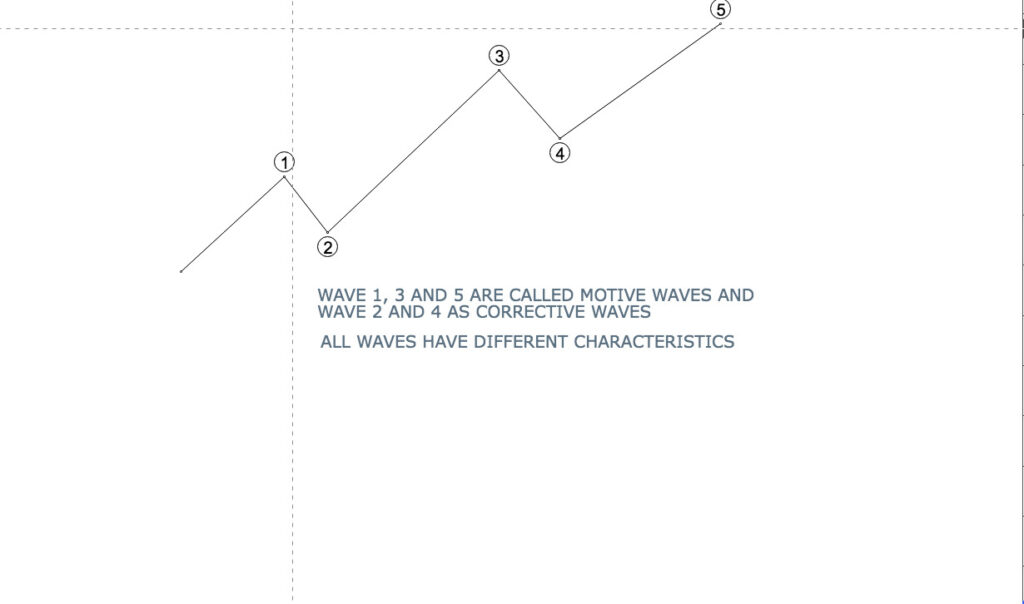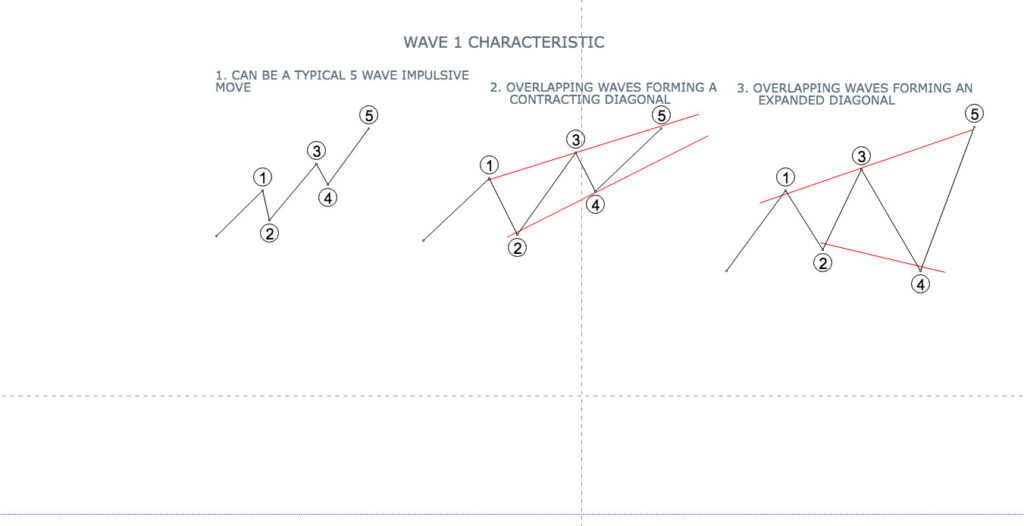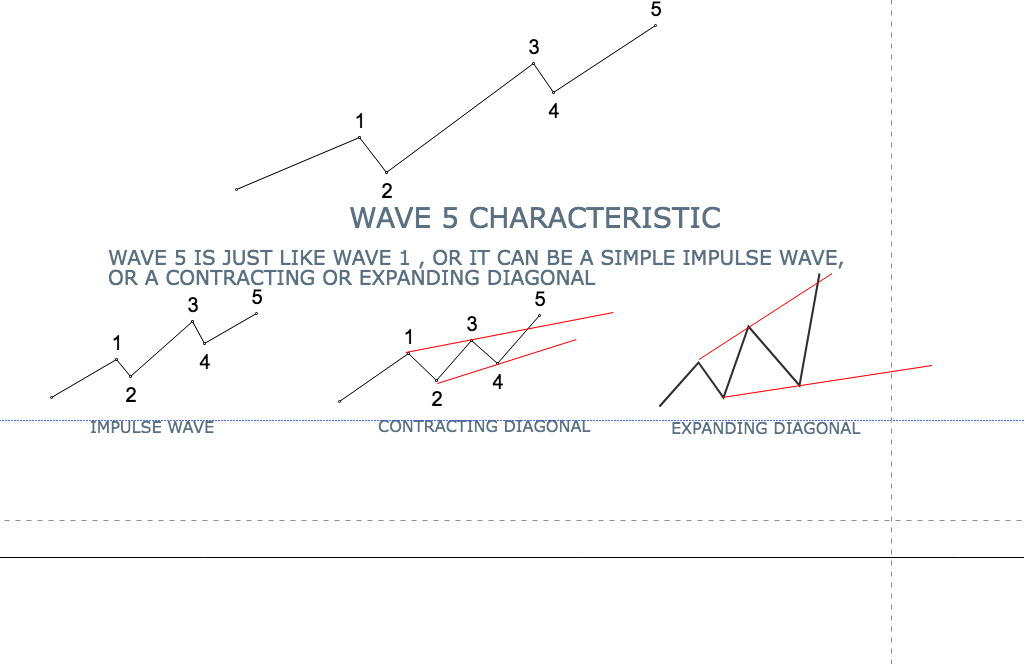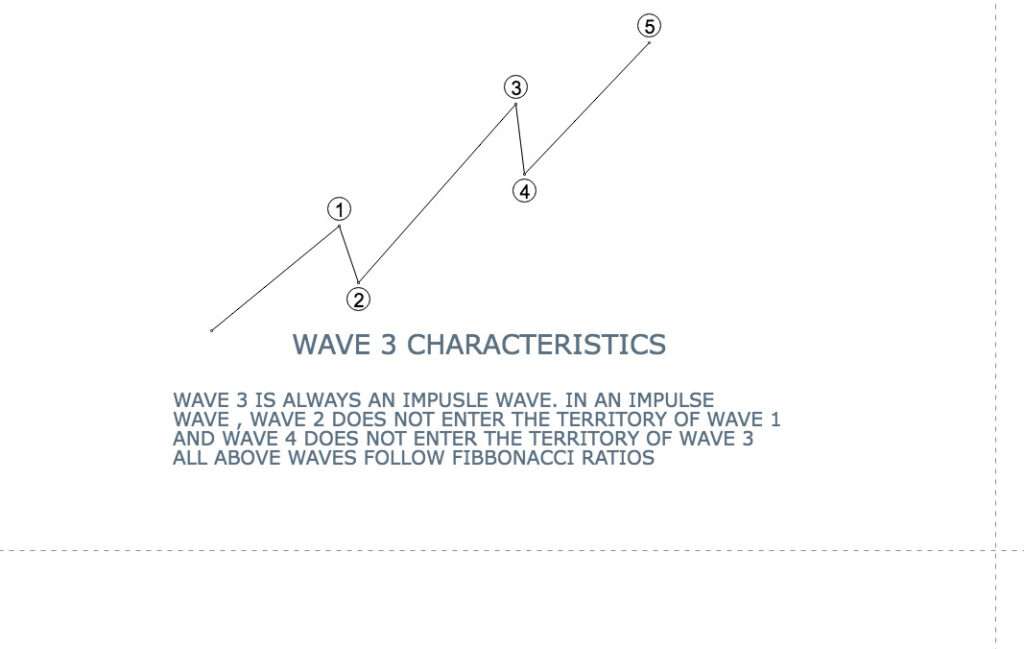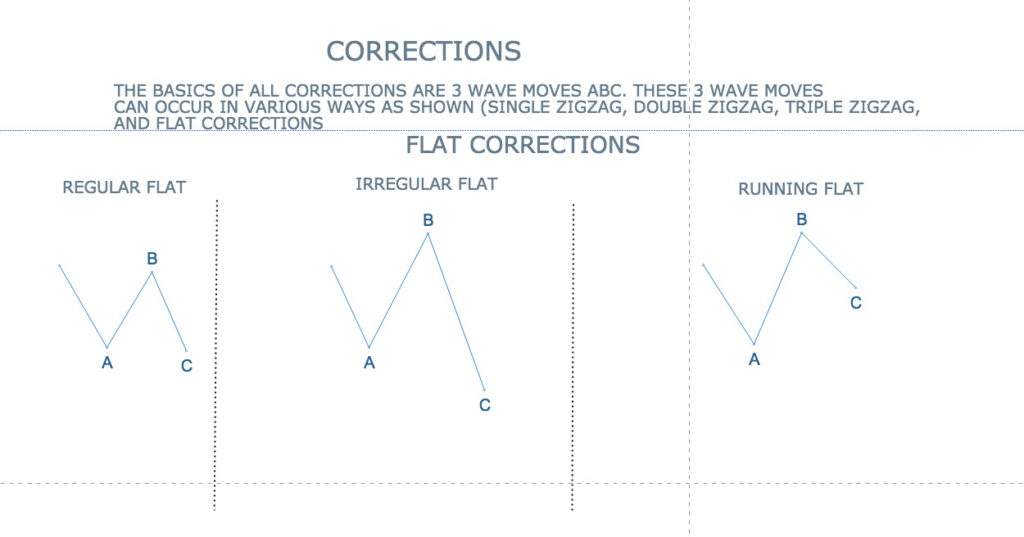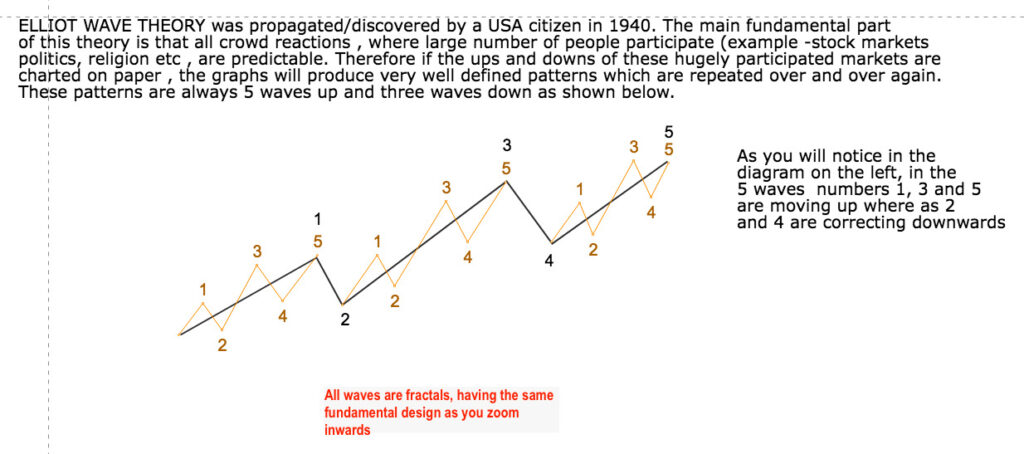NIFTY Opening On 18th Nov 2024
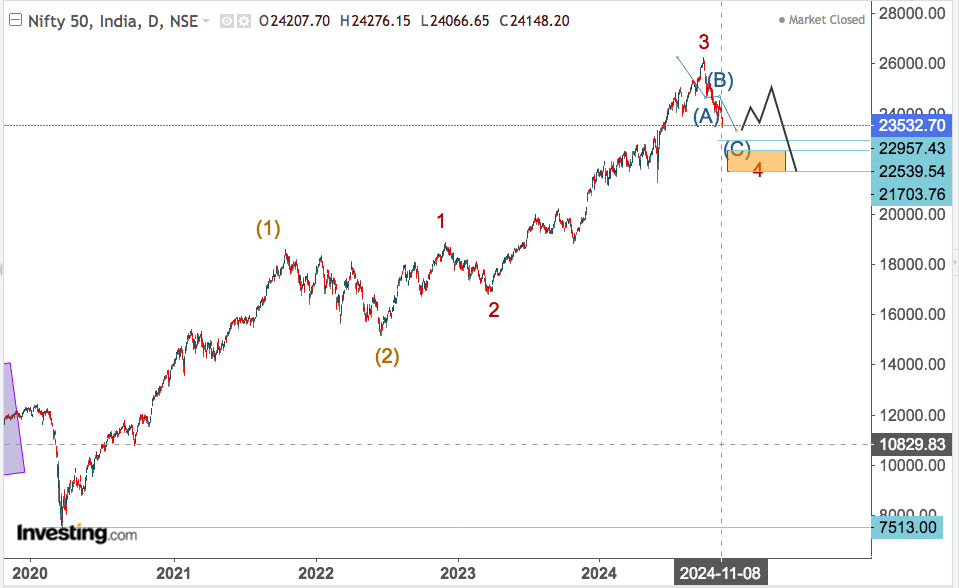
Elliott Wave Analysis of NIFTY 50 (November 2024)
Current Market Scenario
The NIFTY 50 index is currently navigating a combination of impulsive and corrective phases, as identified by Elliott Wave Theory..
Following key patterns of importance
1. Daily Chart Insights:
• The market is believed to be in a counter-trend phase within a broader BULLISH structure. Currently, Red Wave 4 (going down) is active, marking a consolidation period after the completion of Red Wave 3.
• The wave structure suggests a zigzag corrective pattern common in such scenarios, and the INVALIDATION level for this wave count is set at 18,900. Any drop below this could signal a reevaluation of the ongoing upward trend .
2. Weekly Chart Insights:
• The larger structure indicates an impulsive upward trend, with the market progressing through bracketed orange wave (3).Historically, this third wave in the sequence often exhibits strong momentum.
• Expect a continuation of the upward movement once the ONGOING CORRECTIVE WAVE CONCLUDES. This aligns with the theory that Wave 5 could push the index higher, assuming the market stays above critical support levels like 18900.
Outlook
• Short-Term: The market is undergoing consolidation, which may present opportunities for short-term corrections or range-bound trades.
• Medium to Long-Term: The broader bullish structure suggests the potential for further upward movement after the corrective phase concludes, with bracketed orange wave 3 signalling an inherent upward trend.
Elliott Wave analysis for NIFTY 50 provides a dynamic perspective on market trends, however one must remember that any analysis based on wave analysis is highly subjective and must not be taken in an absolute sense.
RELIANCE INDUSTRIES
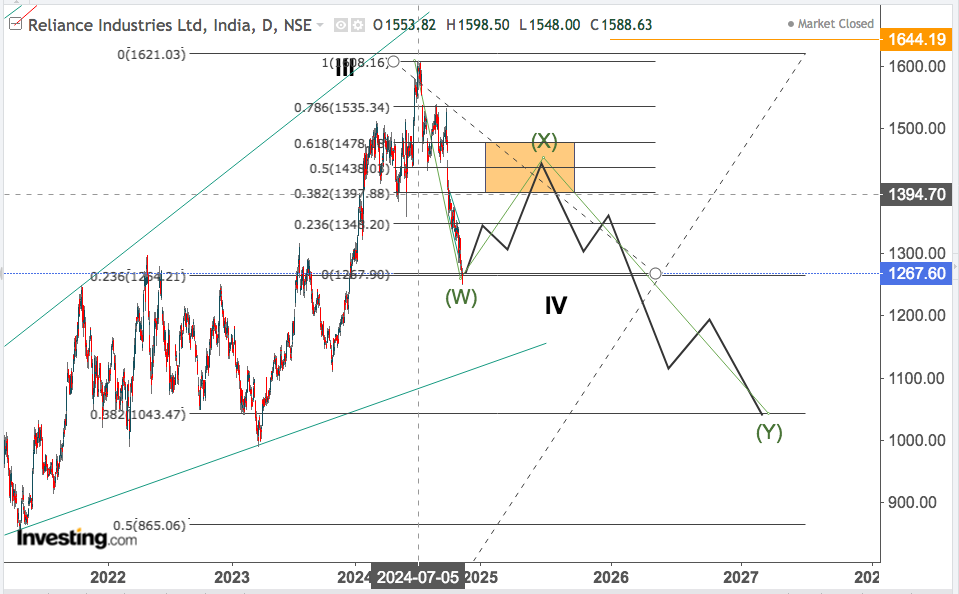
Elliott Wave Analysis of Reliance Industries:
Double Zigzag Structure in Progress
Overview of Cycle Wave III
Cycle Wave III for Reliance Industries concluded in July 2024, marking a significant peak in the stock’s long-term trend. This upward impulsive wave was characterized by robust price momentum driven by the company’s fundamental and technical strength. The completion of this wave indicates the beginning of a corrective phase as part of the Elliott Wave principle.
Current Corrective Structure
The ongoing corrective phase is identified as a double zigzag pattern (W-X-Y), which adds complexity to the market’s behavior:
1. Wave W Formation:
• Wave W is the first corrective wave, completed as an ABC structure, reflecting the initial correction from Cycle Wave III. This phase was characterized by declining prices, signaling profit-taking and a temporary bearish sentiment.
2. Wave X Underway:
• The stock is now expected to enter a countertrend Wave X, moving upward to retrace a portion of Wave W. This retracement will likely encounter resistance in the zone of ₹1398 to ₹1478. This range is derived from Fibonacci retracement levels and prior resistance zones observed in the chart.
• Wave X is anticipated to be corrective in nature, offering a temporary recovery for the stock.
Next Phase: Wave Y and C-Wave Target
Once Wave X concludes, the stock is expected to resume its downward trajectory in Wave Y, completing the second leg of the double zigzag pattern. This downward movement will likely unfold as an ABC structure, with Wave C anticipated to end near ₹1050.
This level aligns with the following:
• Fibonacci Extensions: The 100%-161.8% projection of Wave A within Wave Y.
• Key Support Zones: ₹1050 represents a significant demand zone where buyers previously stepped in.
Strategic Implications for Traders
• Short-term Opportunity: The upward Wave X presents a potential short-term trading opportunity as the stock moves towards the ₹1398-₹1478 resistance zone.
• Medium-term Bearish Outlook: Once Wave X is completed, traders should prepare for bearish continuation toward ₹1050.
• Risk Management: A tight stop-loss strategy is essential, especially during the completion of Wave X, as a premature reversal could signal the start of Wave Y.Conclusion
Reliance Industries is currently in a corrective phase, following the completion of Cycle Wave III. The double zigzag structure suggests that the ongoing Wave X will provide a temporary upward relief, capped by resistance at ₹1398-₹1478. Once completed, the stock is expected to resume its decline in Wave Y, targeting ₹1050. This analysis underscores the importance of aligning trading strategies with key resistance and support levels while factoring in Elliott Wave principles for precise market timing.
NASDAQ

Elliott Wave Analysis of the NASDAQ Composite Index
• Cycle Wave II: Completed in 2002, marking the end of the significant correction following the dot-com bubble burst.
• Cycle Wave III: Concluded in October 2021, after an extended bullish rally driven by technology sector growth and low-interest-rate policies.
• Cycle Wave V:
• Scenario 1: Wave V completed NOW. This aligns with the potential of a market top as growth stocks peaked, followed by a correction phase attributed to rising inflation, interest rates, and geopolitical tensions.
• Scenario 2: Wave V ongoing. In this case, the index is currently retracing within a complex corrective wave structure (likely a zigzag or flat) before resuming its final leg upward. However, technical indicators such as divergence in market breadth and volume suggest a bearish shift could solidify this top soon.Price Targets
• Worst-case scenario: If Cycle Wave V has completed, the index may be in the early stages of a Cycle Wave A, targeting significantly lower levels.
Fundamental View
The NASDAQ Composite’s heavy weighting in tech and growth stocks makes it sensitive to macroeconomic conditions. In recent months:
• Interest Rates: Persistent high-interest rates have dampened growth stock valuations, especially those with high P/E ratios.
• Earnings Season: Tech sector earnings have been mixed, with some companies struggling to meet high expectations post-pandemic.
• Innovation Outlook: AI-driven growth narratives have provided temporary support to the market, but valuations remain stretched.
Outlook Summary
From an Elliott Wave perspective, Cycle Wave V is either complete or nearing completion, with a bearish correction likely to unfold. Traders should remain cautious, monitoring key resistance zones and broader market signals, while aligning strategies with macroeconomic trends.

